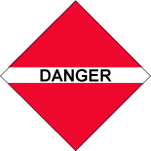A modification negotiated under the Security and Prosperity Partnership of North America (SPP) will soon ease the transportation of dangerous goods between Canada and the United States.
The U.S. Pipeline and Hazardous Materials Administration has revised its regulations to recognize containers manufactured in accordance with Transport Canada's Transportation of Dangerous Goods Regulations as equivalent to American containers.
With the change, as many as 5 per cent of trucks coming over the Canadian border that previously had to be empty can now carry loads, easing border pressure and helping the environment.
 Because of small differences in the way their respective regulations are written, Canada and the U.S. certify containers separately. Typically, the classification and labelling of dangerous goods is based on recommendations set out by the United Nations in the Transportation of Dangerous Goods, model regulations. Under the UN model, countries are allowed to make the final decisions regarding their respective regulations.
Because of small differences in the way their respective regulations are written, Canada and the U.S. certify containers separately. Typically, the classification and labelling of dangerous goods is based on recommendations set out by the United Nations in the Transportation of Dangerous Goods, model regulations. Under the UN model, countries are allowed to make the final decisions regarding their respective regulations.
In the past, the U.S. has not fully recognized Canadian specifications. Trucks carrying dangerous goods in containers made to Canadian specifications were permitted only to travel into the U.S. and unload; they could not fill up in the U.S. and return to Canada with a load. This has meant that up to 5 per cent of all trucks crossed the Canadian border empty, burning fuel and adding to border pressure.
With the modification, the cross-border transportation of dangerous goods will become seamless, creating an equal playing field for container manufacturers and shippers in both countries. Dangerous goods include flammable, corrosive, explosive, toxic or infectious materials, ranging from petroleum products to acids and compressed gases. Canada and the U.S. will recognize each other’s specifications for transporting such goods, while continuing to ensure high standards in the two countries.
“Everybody’s life just gets easier,” said Dwaine Ferguson, the engineering manager of Goldec Hamms Manufacturing Ltd., a company in Red Deer, Alberta, that makes tanker trucks for transporting dangerous goods, especially in the oil industry.
“We were able to find an approach that showed that we have an equivalent level of safety, without being identical,” explained Mr. Ferguson. “Canadian tanks are recognized as being fully equivalent, with comparable levels of safety.”
He said the change benefits container manufacturers, truckers, drivers and shippers as well as the wider community, which can be assured that such goods are transported safely and effectively on public highways.
The change, which comes into effect October 2007, will allow Canadian manufacturers better access to the U.S. market, and will reduce the cost, time and paperwork associated, for example, with having to get their containers certified in both Canada and the U.S.
The Security and Prosperity Partnership of North America works to ensure compatibility in regulations in North America while maintaining standards and the individual sovereignty of countries. The initiative on dangerous goods was part of the SPP’s Manufactured Goods and Sectoral and Regional Competitiveness Working Group.
Further reading:
Transport Canada Dangerous Goods Directorate
U.S. Department of Transportation Pipeline and Hazardous Materials Safety Administration
UN Recommendations on the Transport of Dangerous Goods, Model Regulations
More feature stories